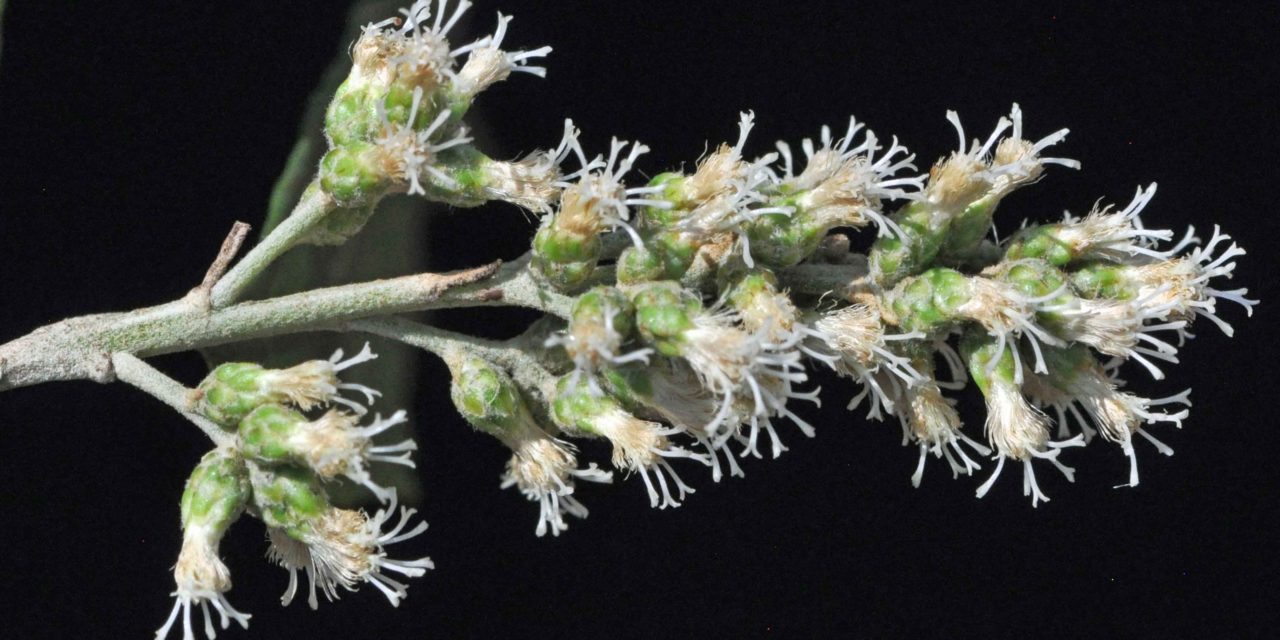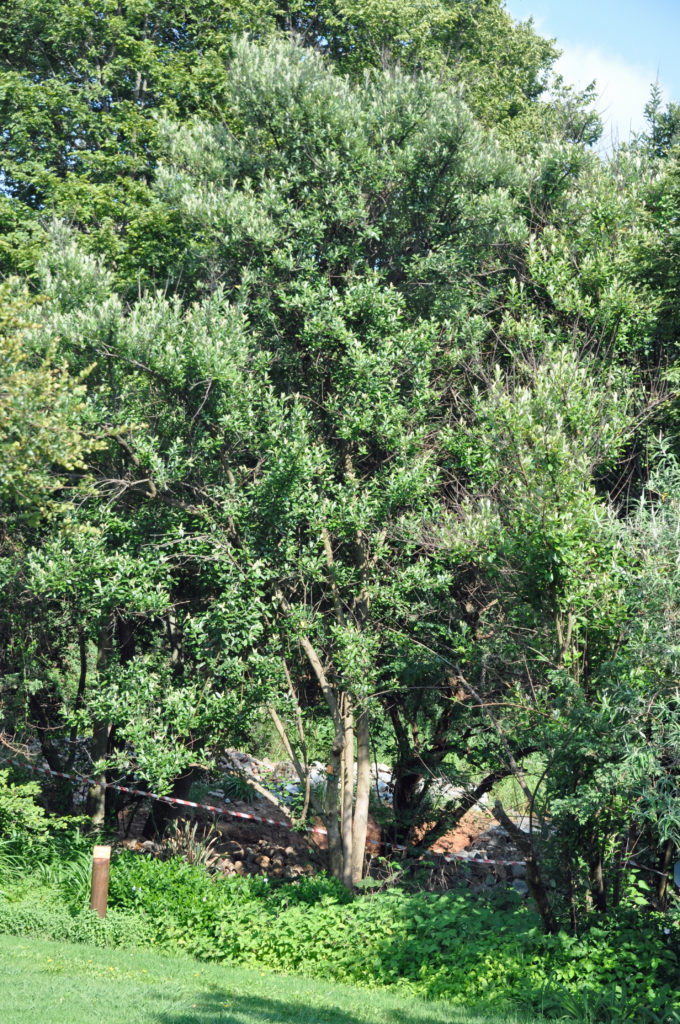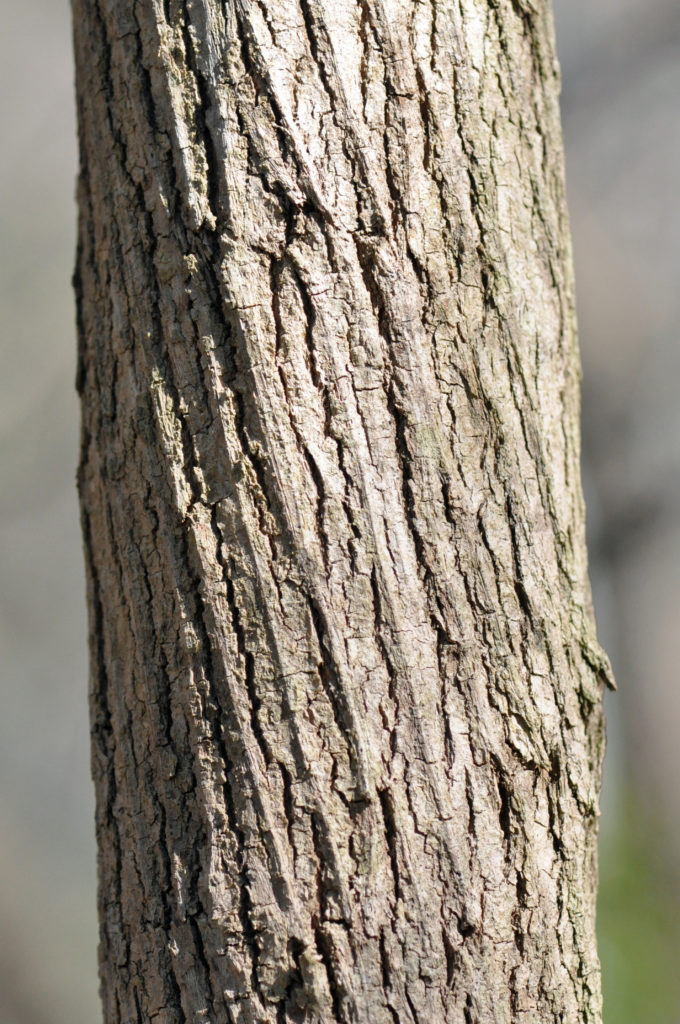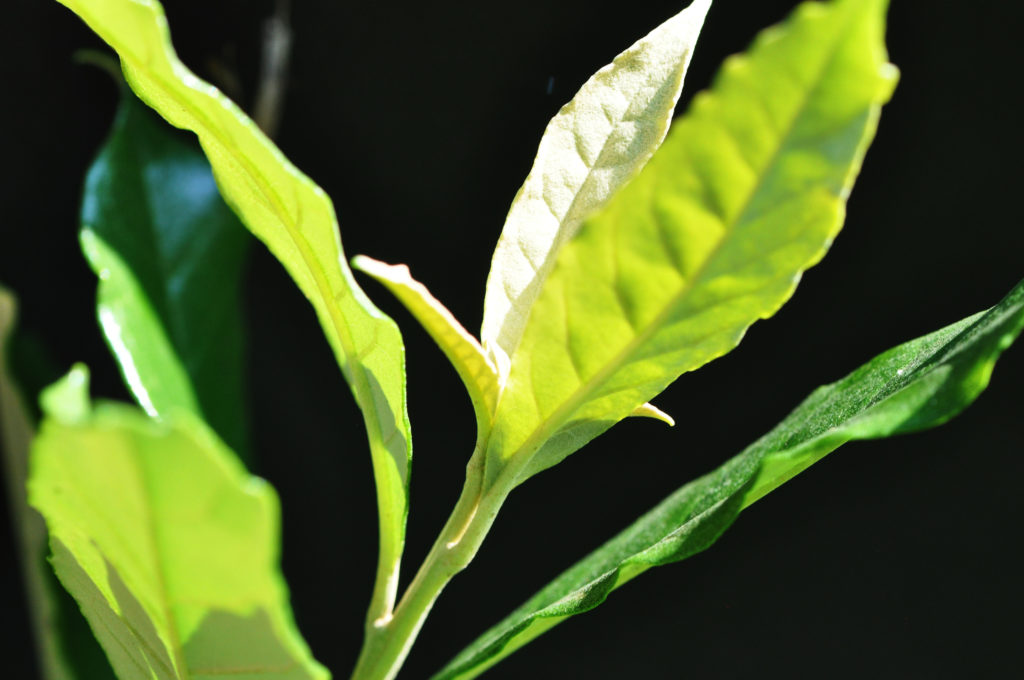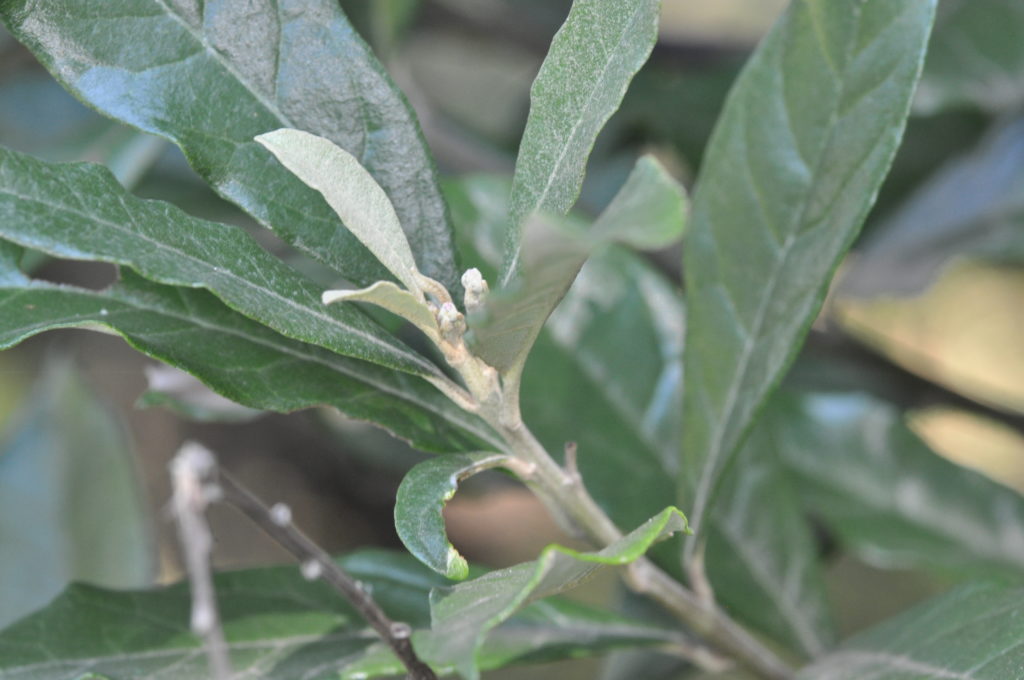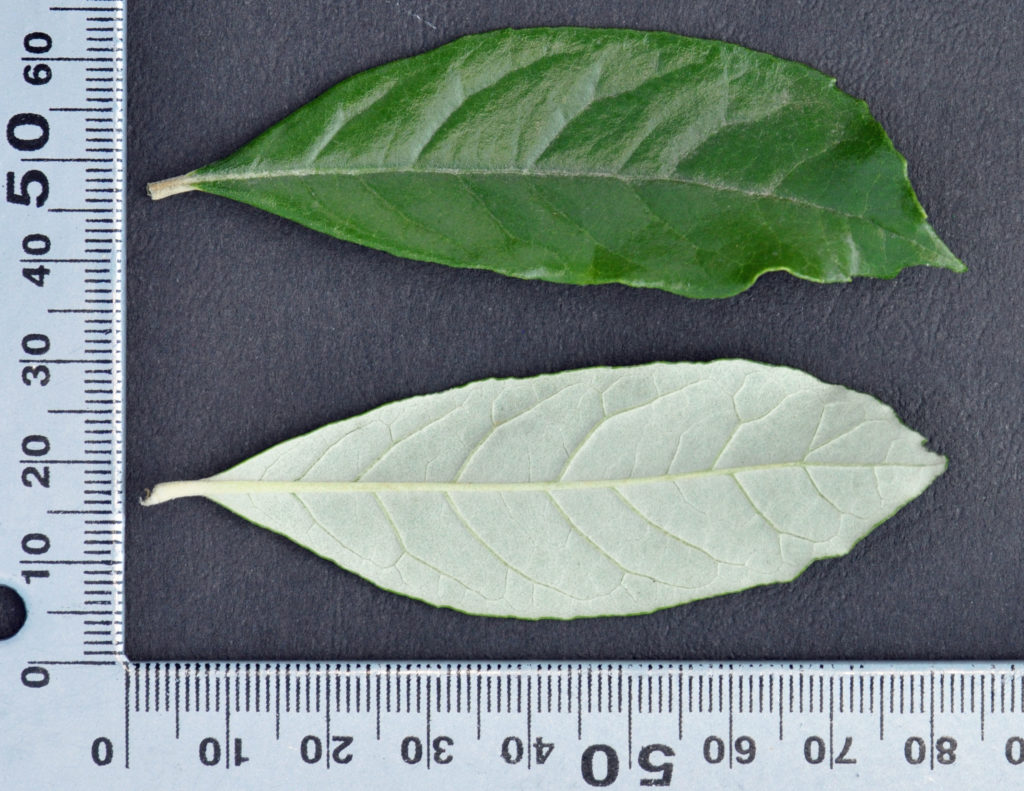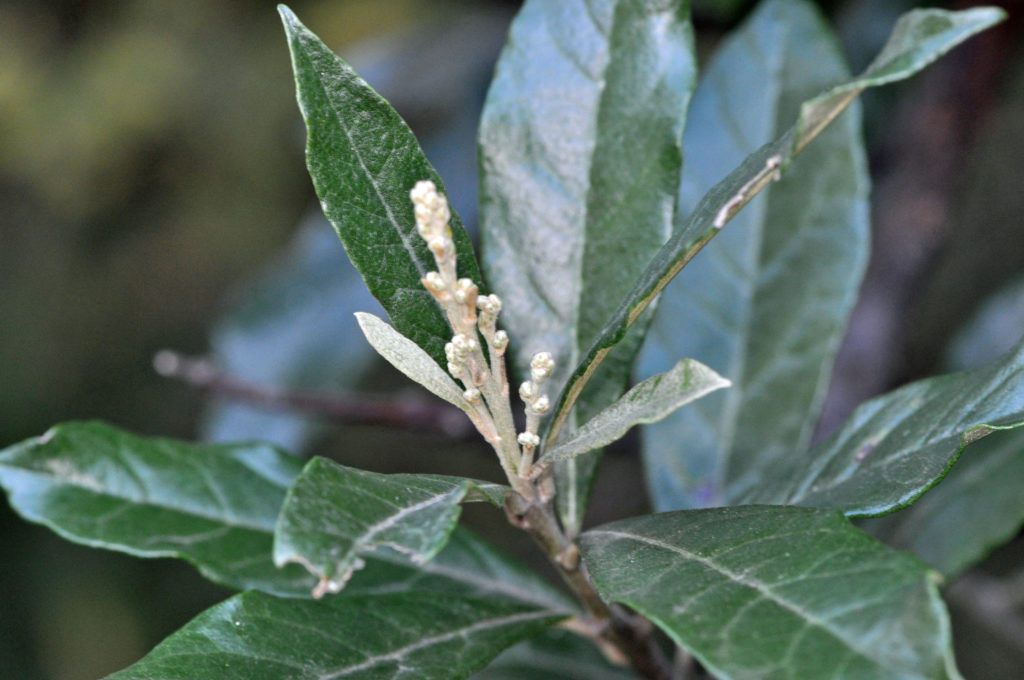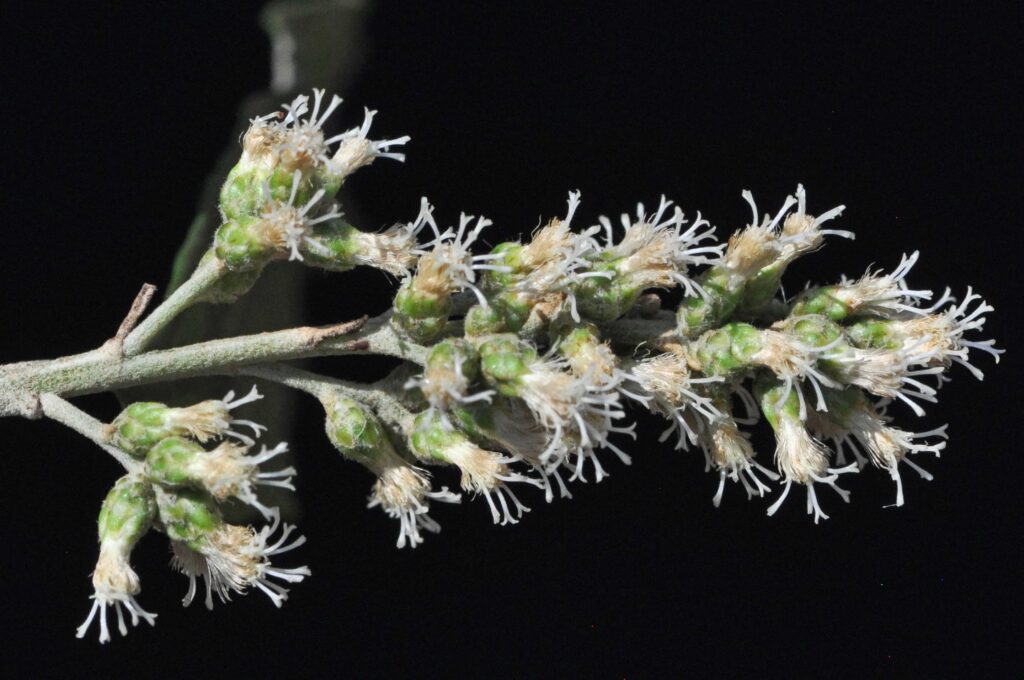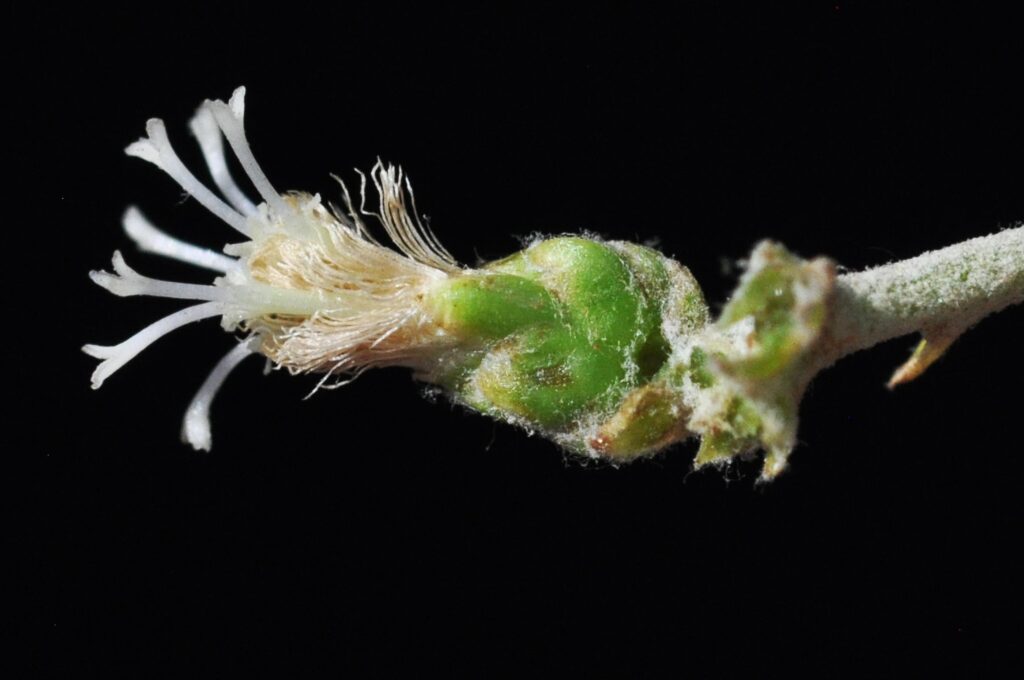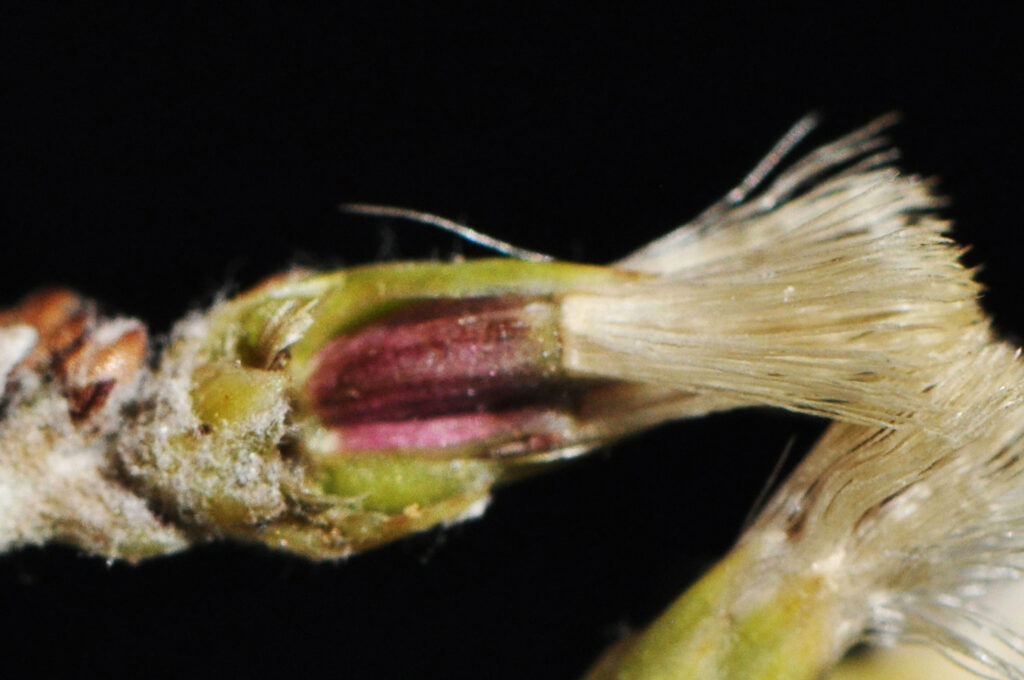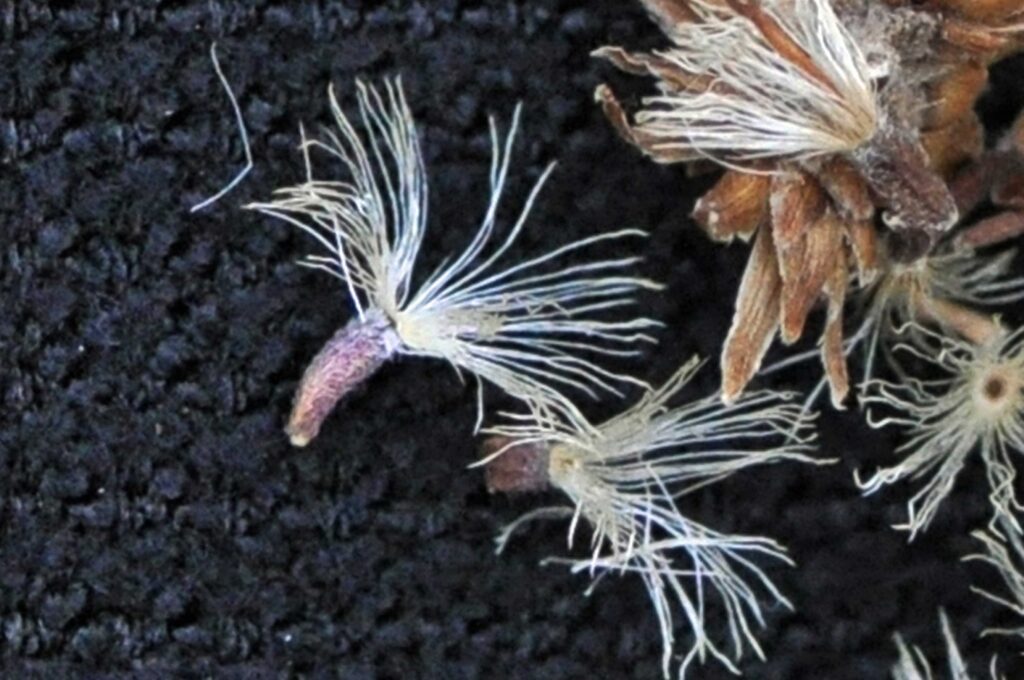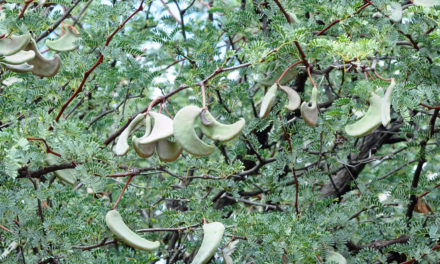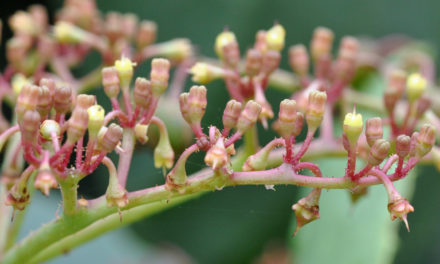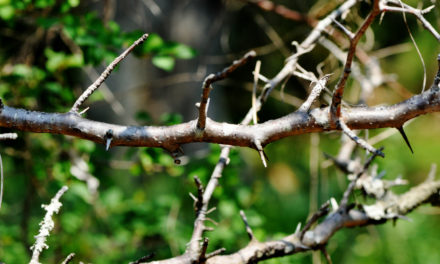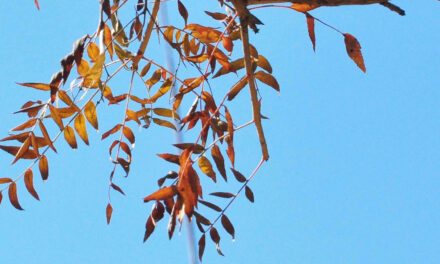General Info – summary
This attractive dioecious Tree with a single straight trunk arises up to 30m high and 30cm wide. Tree has vertically fissured bark. Simple, entire and spirally arranged Leaves are discolorous. Inflorescences are contained within panicles. Male trees lack an ovary and in female trees, tiny Florets are in capitula. Nectar attracts insects. Fruit is a small cypsela with attached bristles that help the wind dispersal of seeds.
Description.
Brachylaena transvaalensis
Previous Names: Brachylaena discolour subsp. transvaalensis.
SA Tree No. 731.
Common name: (Afr) Bosvaalbos, Vaalboom. (Eng) Forest Silver-oak, Salie. (isiZulu) iPhahla, Umphahla. (Northern Sotho) Motshantshane, Mphahla. (siSwati) iPhahla, Umphahla. (Tshivenda) Mufhata.
Family: Asteraceae – Compositae (Daisy family: includes sunflowers, lettuce, chicory, marigolds). There are in excess of 1 900 genera and close to 33 000 species. This is possibly the second biggest plant family. In southern Africa, there are 246 genera and about 2 300 species. Local genera containing trees on this website include Brachylaena, Oldenburgia and Tarchonanthus. Some members have flowers grouped in heads and the whole head may appear to be a single flower – like the “sunflower”. Surrounding each flower are bracts. Individual Flowers have sepals replaced by a pappus which may be bristle, plume, scale or awn like. Individual flowers are called Florets that may have 5 fused petals. The inferior Ovary contains one Ovule, and the Style has 2 lobes.
Name derivation: Brachylaena – short cloak – referring to the short floral bracts. transvaalensis – referring to location in the old province – Transvaal (northern South Africa).
Conservation: National Status: L C. (Least Concern). Assessed: 2005 (W. Foden and L. Potter).
Tree
This impressive slender, usually single Tree is tall – up to 30m high (photo 614). The Trunk is single, straight and up to 30cm+ in diameter. The plant is usually solitary or may occur in small groups. The initially smoothish Bark is grey or brown-grey. It ages to become rough, vertically fissured (photo 953) and stringy. Pale, raised Lenticels (usually raised corky oval or elongated areas on the plant that allows the uncontrolled interchange of gases with the environment), which may run lengthwise, are visible on the hairless young branches.
- 614 2014.12.23 Walter Sisulu NBG. Photo: David Becking. alter Sisulu
- 953 2014.08.05 Walter Sisulu NBG. Photo: David Becking.
Leaves
These usually evergreen trees may be briefly deciduous. The splendid thick foliage has pale green young leaves (photo 606). Mature Leaves are discolorous (having upper and lower surfaces of leaves different colours) – dark green above and with dense whitish hairs below (photo 609). The spirally arranged leaves may be wavy (photo 606). They are simple (has a single blade, which may have incisions that are not deep enough to divide the blade into leaflets). Each leaf is narrowly elliptic and usually about 8 x 4cm (photo 609) or larger – up to 20 x 8cm. The Blade has veins that are sunken above and protrude below (photo 609), where they are more clearly visible. The lateral veins end in a rough V-shape before reaching the margin (photo 609). Apart from closer to the apex – where it is irregularly to sharply toothed, the Margin is mostly entire (with a continuous margin, not in any way indented but may be hairy) but may be irregularly toothed. The margin may be rolled under. The Apex is rounded or tapering to acuminate (said of an acute apex whose sides are somewhat concave and taper to a protracted point – like a drip-tip (upper leaf in photo 609). The Base is narrowly tapering and partly decurrent (leaf blades that partly wrap or have wings around) the 5cm long Petiole (leaf stalk) that is channeled on the upper side (photo 600).
- 606 2014.12.23 Walter Sisulu NBG. Photo: David Becking.
- 570 2015.04.14 Walter Sisulu NBG. Photo: David Becking.
- 609 2014.12.23 Walter Sisulu NBG. Photo: David Becking.
Flowers
The creamy or greenish Florets (flowers) develop in terminal (photo 688) or axillary Capitula (false flower containing a dense cluster of many small, drab yellow Florets (individual Flowers mainly in Asteraceae and grasses). Each capitulum is up to 16cm long. The tiny Florets (individual flowers) are up to 5mm long. Florets collectively make up the dense inflorescence. Pedicels (individual flower stalks) are reduced or absent. The Calyx develops a Pappus (modified outer perianth series of Asteraceae, borne on the ovary (photo 453). Here the calyx is replaced by is a single row of scabrid (somewhat rough in texture) Bristles. The cylindrical Corolla tube ends with 5 lobed Petals. Much reduced, initially green Involucre Bracts (each bract is a usually a much-reduced specialized leaf) occur in 3-7 rows below the florets/flowers (photo 655).
The tree is dioecious (unisexual floral structures with functional male and female parts on separate plants). The Male Capitula have 11-16 florets. The Anthers are filiform (thread or filament like). The Receptacle (is that expanded tip of the flower stalk from which the floral parts develop and is greatly expanded in the Asteraceae and Ficus) is honeycombed, and slightly convex. The Ovary is usually absent. The Female Capitula are up to 16cm long and have up to 8 florets in large axillary and terminal Panicles (indeterminate, branched inflorescence with stalked flowers photo 654). The ribbed, single chambered Ovary is ovoid to oblong and has a bilobed Stigma (photo 655). (Jul-Oct).
- 668 2015.04.21 Walter Sisulu NBG. Photo: David Becking.
- 654 2019.09.18 Walter Sisulu NBG. Photo: David Becking.
- 655 2019.09.18 Walter Sisulu NBG. Photo: David Becking.
- 453 2017.10.10 Walter Sisulu NBG. Photo: David Becking. Dissected.
Fruit
The Fruit is a small Cypsela (in Asteraceae it is a dry single-seeded fruit formed from a double ovary of which only one develops into a seed). The small fruit has an apical tuft of creamy-brown bristles (photo 368) that aid wind dispersal of the seeds. After seed dispersal, the remains of the now whitish Bracts are visible (“central” in photo 366). (Aug-Nov).
- 368 2015.10.13 Walter Sisulu NBG. Photo: David Becking.
- 366 2015.10.13 Walter Sisulu NBG. Photo: David Becking.
Distribution & Ecology
This medium altitude Tree is Endemic (restricted to a particular geographic location) in southern Africa. Trees are located in evergreen deciduous forests, forest margins and wooded grasslands. They occur in KwaZulu-Natal – along the escarpment, Mpumalanga, Limpopo and in Swaziland. The Nectar attracts insects including bees. Insectivorous or carnivorous birds that visit the Trees include Flycatchers, Shrikes and Prinias (small insectivorous birds). Bushbuck and Kudu browse the Leaves.
Ethnobotany
The hard, tough fine-grained, elastic Wood is durable and used for implement handles, boat building, fence posts etc. The very large trees are usually hollow and unsound. This is a good garden tree and propagation is through seeds or cuttings. The Roots are non-invasive. The tree grows best in full sun and is frost hardy. Aqueous extracts from the plant have shown some antibacterial activity. Parts of the plant are used in local medicine.
References
Boon, R. 2010. Pooley’s Trees of eastern South Africa. Flora and Fauna Publications Trust, Durban.
Coates Palgrave, M. 2002. Keith Coates Palgrave Trees of Southern Africa, edn 3. Struik, Cape Town.
Foden, W. & Potter, L. 2005. Brachylaena transvaalensis E.Phillips & Schweick. National Assessment: Red List of South African Plants version 2020.1. Accessed on 2022/10/22.
Lawrence, G. H. M, 1951. Taxonomy of Vascular Plants. The Macmillan Company, New York. Tenth Printing 1965.
Palmer, E. & Pitman, N. 1972. Trees of southern Africa. Balkema, Amsterdam, Cape Town.
Schmidt, S. Lotter, M. & McCleland, W. 2002. Trees and Shrubs of Mpumalanga and the Kruger National Park. Jacana, Johannesburg.
van Wyk, B. & van Wyk, P. 1997 Field guide to Trees of Southern Africa. Struik, Cape Town.
http://www.plantzafrica.com/templates/voteplant.php
http://iscantree.co.za/brachylaena-transvaalensis-bosvaalbos-forest-silver-oak/
https://www.ncbi.nlm.nih.gov/pmc/articles/PMC4364486/
http://posa.sanbi.org/flora/browse.php?src=SP

